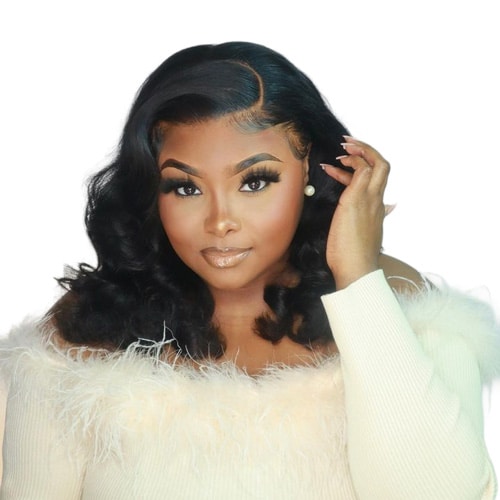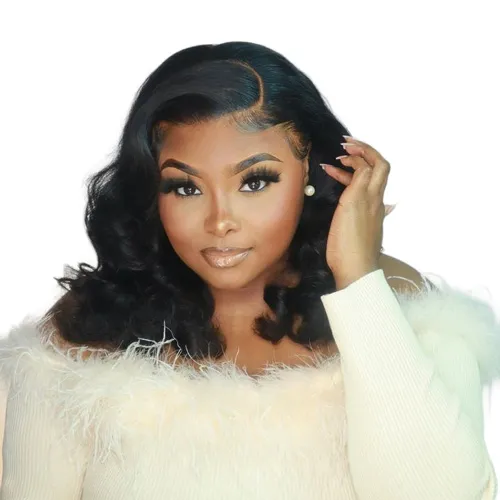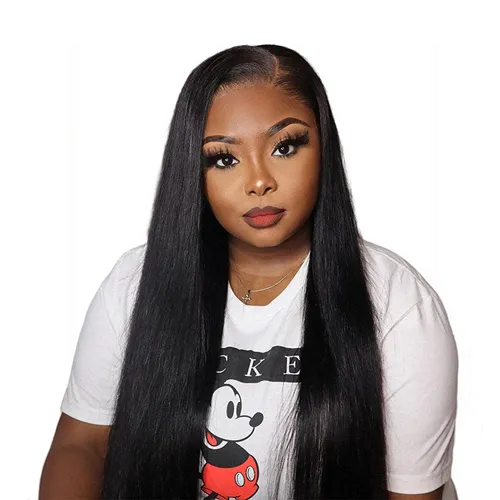Short Wig vs. Long Wig: Which Looks Better?

Choosing between a short and a long wig can be a complex decision, influenced by a variety of factors including personal style, lifestyle, and the occasion for wearing the wig. This article delves into the aesthetics, maintenance, versatility, and comfort of short and long wigs, providing insights to help you make an informed decision.
I. Aesthetic appeal.

a. Short wigs.
Pros:
Modern and chic; often associated with professionalism and a clean, uncluttered look.
Highlights facial features, such as the jawline and cheekbones.
Offers a youthful appearance, often rejuvenating the wearer’s look.
Cons:
Limited styling flexibility compared to longer wigs.
May not suit all face shapes equally well.

b. Long wigs.
Pros:
Traditional symbol of femininity and beauty in many cultures.
Versatile in styling (e.g., braids, up-dos, loose waves).
Can balance out longer face shapes by adding volume and width.
Cons:
Can overwhelm certain petite body types or face shapes.
Might look less natural if the wig quality is not premium.
II. Styling.
Short wigs.
Easier to maintain a consistent style.
Limited in terms of styling variety but offers chic simplicity.
Ideal for those who prefer a “set-and-forget” approach to their hairstyle.
Long wigs.
Wide range of styling options, from ponytails to intricate braids.
More susceptible to trends; can be cut or restyled as desired.
Requires more skill and time to change styles frequently.
III. Comfort and practicality.
Short wigs.
Lighter weight, causing less strain on the scalp.
Cooler, making them ideal for hot climates or active lifestyles.
Less prone to tangling, reducing maintenance effort.
Long wigs.
Can be heavy, especially those made from natural hair.
Warmer, which might be beneficial in cooler climates but uncomfortable otherwise.
Requires regular care to prevent tangling and maintain appearance.
IV. Maintenance and durability.
Short wigs generally require less maintenance and are easier to keep looking fresh.
Long wigs may need regular washing, detangling, and styling to maintain their appearance.
Both types can vary in durability based on material (synthetic vs. human hair) and construction quality.
V. Occasion and purpose.
Short wigs for professional environments and ease of care.
Long wigs for versatility in fashion and formal occasions.
Consider the wearer’s lifestyle, comfort preferences, and the image they wish to project.
VI. Considering facial shape while selecting the wig’s length.
Choosing the right wig length based on your face shape is essential for creating a harmonious and flattering look. The shape of your face can significantly influence how different wig lengths look on you. Here’s a guide to help you select between short and long wigs, taking into consideration various face shapes.
Face shapes.
First, identify your face shape by looking at your jawline, cheekbones, and forehead’s width in relation to the length of your face. Common face shapes include oval, round, square, heart, diamond, and oblong.
a. Oval face shape.
Characteristics: Balanced proportions, slightly narrower at the jawline than the temples.
Wig length: Both short and long wigs work well with oval faces. You have the versatility to experiment with any length, as the balanced proportions of your face will be complemented well by both.
Suggestions: Feel free to experiment with various styles, including bobs, pixie cuts, or long, layered looks.
b. Round face shape.
Characteristics: Almost as wide as it is long, with a wide forehead, full cheeks, and a rounded chin.
Wig length: Long, layered wigs can help elongate your face and make it appear slimmer. If you prefer short wigs, opt for ones with volume at the top to add height to your face.
Suggestions: Avoid chin-length blunt cuts as they can emphasize the roundness of the face.
c. Square face shape.
Characteristics: Strong, angular jawline and approximately the same width at the forehead, cheeks, and jaw.
Wig length: Long wigs with layers can soften the angularity of a square face. If choosing a short wig, look for ones that soften the jawline, such as textured bobs or layered pixie cuts.
Suggestions: Wigs with curls or waves can also help soften the angles of the face.
d. Heart face shape.
Characteristics: Wider at the forehead and temples, narrowing down to a small, pointed chin.
Wig length: Medium to long wigs with layers that start near the chin or jawline can balance the width of the forehead. Short wigs with volume and texture at the bottom can also balance out the narrower chin.
Suggestions: Avoid very short, voluminous styles at the top as they can accentuate the width of the forehead.
e. Diamond face shape.
Characteristics: Narrow at the forehead and jawline, with wider cheekbones.
Wig length: Both short and long wigs can complement diamond faces. Choose styles that add width at the forehead and chin to balance the face.
Suggestions: Bob cuts that end near the chin or layered styles can enhance your look beautifully.
f. Oblong (or rectangular) face shape.
Characteristics: Longer than it is wide, with a long, straight cheek line.
Wig length: Short to medium lengths work best to create the illusion of a shorter face. Consider wigs with bangs or volume at the sides to add width.
Suggestions: Avoid excessively long wigs as they can make the face appear even longer.
VII. How to decide between wigs that are long or short?
Choosing between a short wig and a long wig involves considering various factors including lifestyle, personal style, maintenance preferences, and the shape of your face. Here’s a guide to help you make an informed decision:
1. Consider your lifestyle.
Active lifestyle: If you lead an active lifestyle, play sports, or exercise regularly, a short wig might be more practical. It’s less likely to get in the way and is easier to manage and keep out of your face.
Professional environment: For a professional setting, short wigs can appear more neat and tidy. However, long wigs can also be styled professionally, so consider what you feel most confident in.
2. Think about maintenance.
Short wigs: Generally, short wigs require less time to style and maintain. They are easier to wash, dry, and care for because there’s less hair to manage.
Long wigs: Require more maintenance, including regular detangling and careful styling. If you enjoy styling your hair in various ways, a long wig might offer more versatility but consider the time commitment.
3. Reflect on your personal style.
Aesthetic preferences: Do you have a preference for the chic, edgy look that short hair can provide, or do you feel more feminine and versatile with long hair? Your wig should reflect your personal style and make you feel confident.
Wardrobe considerations: Think about your current wardrobe and which wig style might complement it better. Some outfits might look better with the sleekness of a short wig, while others might be enhanced by the flow of a long wig.
4. Evaluate face shape.
Short wigs: Typically, short wigs can highlight and frame your facial features more prominently. They can be especially flattering for heart-shaped and oval faces.
Long wigs: Can soften the appearance of certain face shapes and are often recommended for those with more angular faces. Long wigs can also add balance to rounder face shapes.
5. Consider the occasion
Versatility for events: If you attend many formal events, a long wig might provide more styling options. For everyday wear, a short wig might be more practical and comfortable.
Changing looks: Some people choose to have both short and long wigs in their collection to change their look according to the occasion or mood.
6. Understand the climate.
Warm climates: In hotter environments, a short wig might be more comfortable as it allows for better airflow and keeps you cooler.
Cool climates: A long wig can provide a bit of extra warmth during colder months.
7. Budget considerations.
Cost: Generally, long wigs might be more expensive than short wigs because they require more hair to make. Also, consider the cost of maintenance products and time investment.
8. Trial and error.
Experiment: If possible, try on different wigs before making a decision. Seeing how you look and feel in both short and long wigs can be a deciding factor.
Consultation: Speak with a stylist or wig specialist who can offer personalized advice based on your facial features, lifestyle, and style preferences.
Conclusion.
There is no one-size-fits-all answer to whether a short or long wig looks better. The best choice depends on individual needs, preferences, and the context in which the wig will be worn. Encouragement to experiment with different lengths and styles to find what feels most comfortable and empowering.
